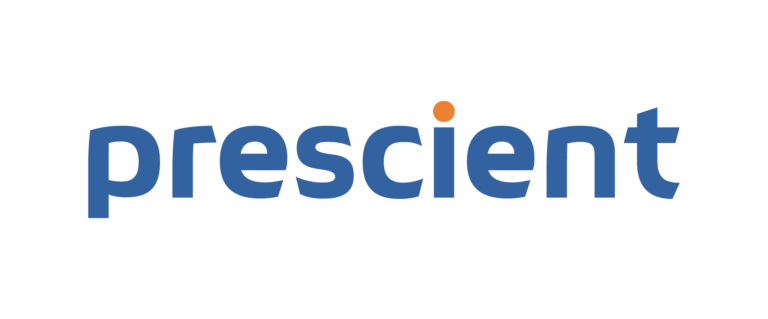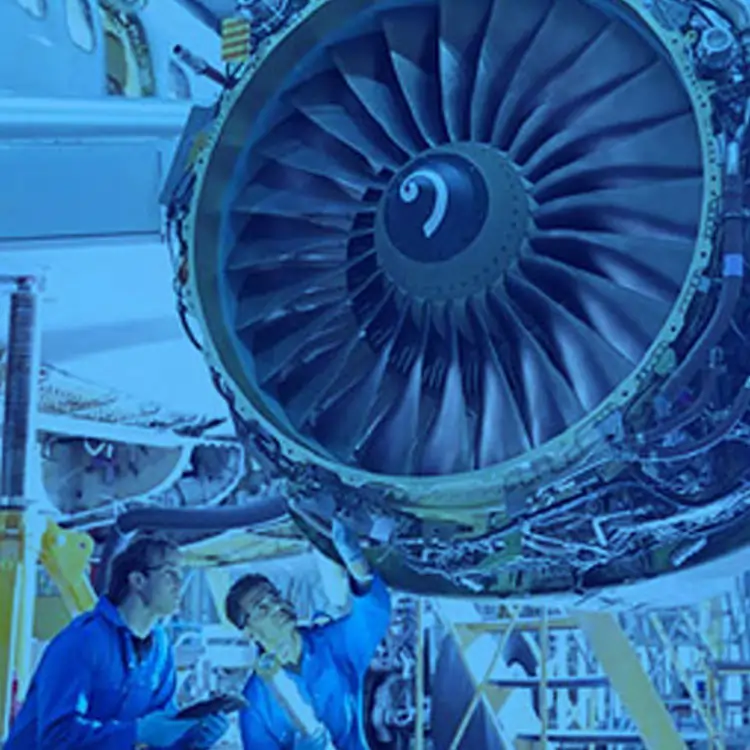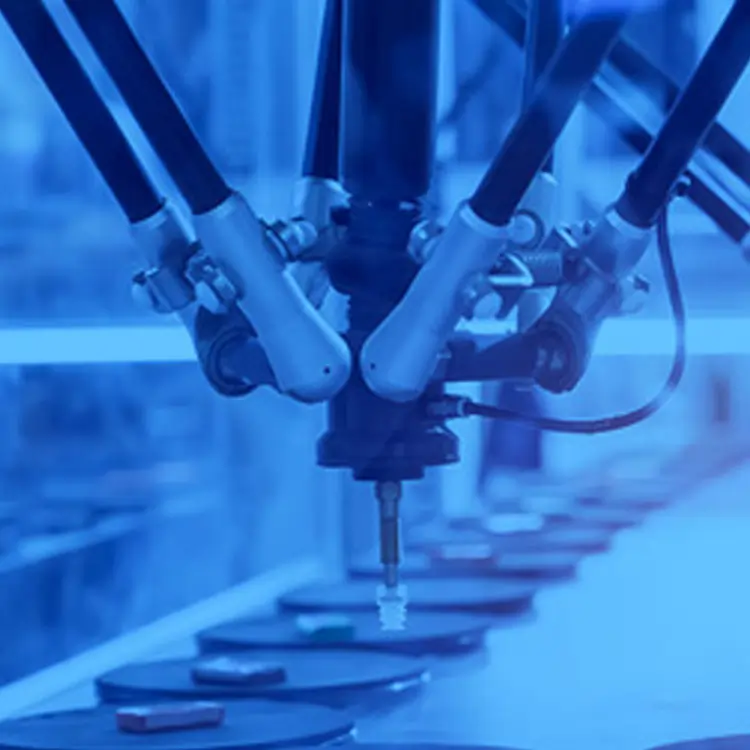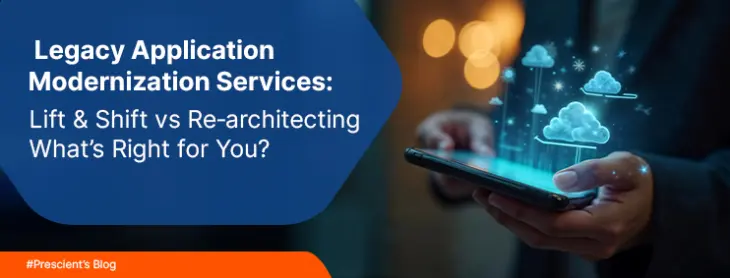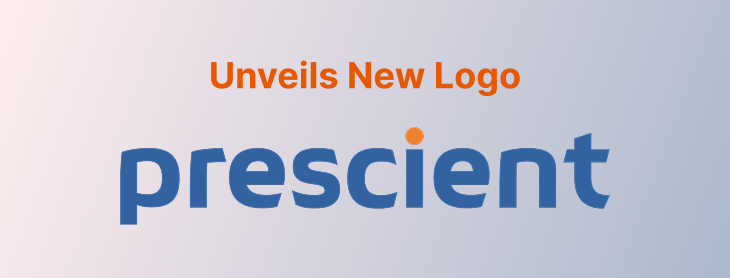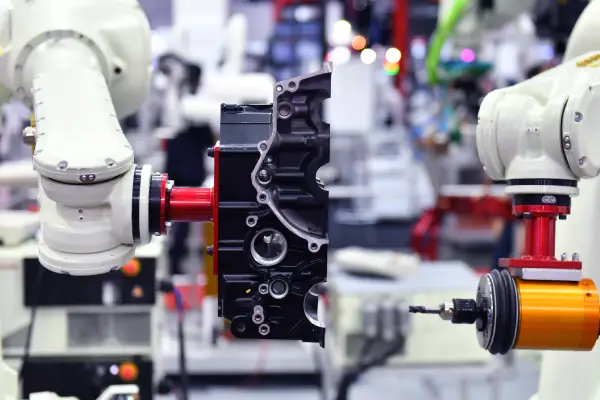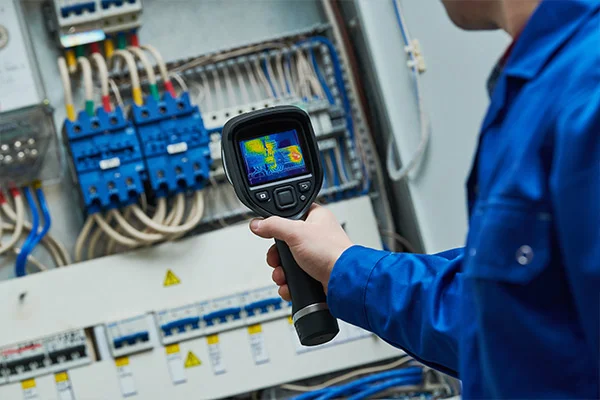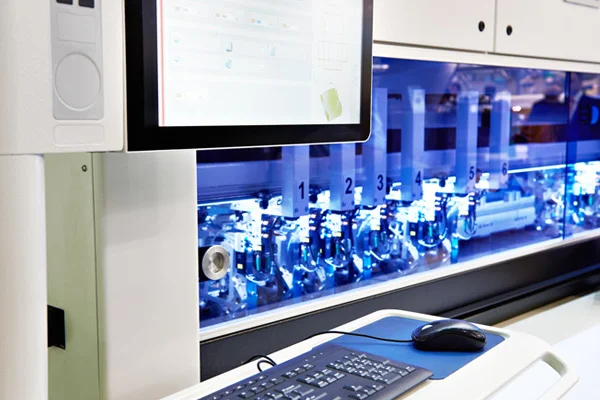Vision Based Inspection
The Power of Vision-Based Solutions in Manufacturing by Prescient Technologies
Features Of The EMIS
Features Of The EMIS

Web-based Platform
Our Digital Logbook is accessible anytime, anywhere. Whether you prefer on- premises or cloud deployment, our platform provides the flexibility to suitHighlighting how Digital Thread saves time and resources by eliminating manual data entry and transfer, allowing employees to focus on more value-added tasks your specific needs.

Customizable Checklists
Tailor your checklists to fit your unique requirements. With our platform, you can easily create and configure checklists, define the order of checklist items, and provide additional instructions for each step.
Benefits of EMIS
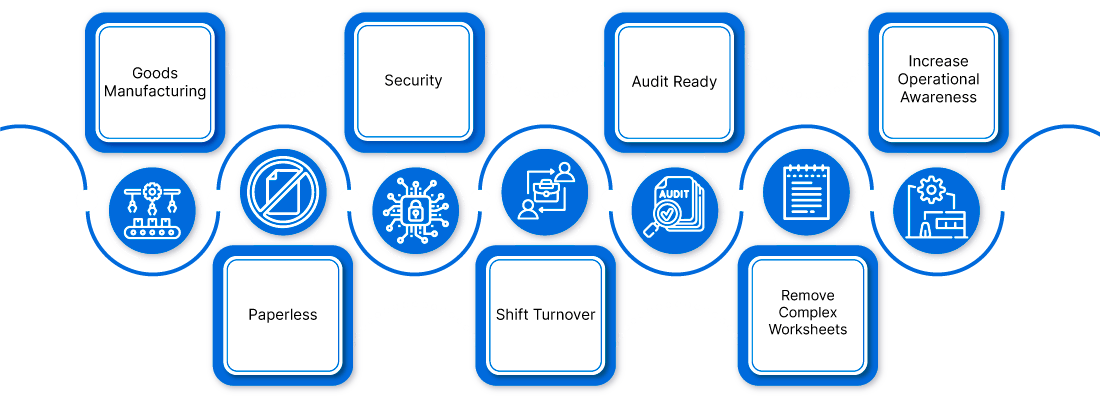
Digital Logbook Operation Rules
Functional Administrator
- Defines production lines and workshops
- Defines systems users and roles
- Configures different masters and checklists
Operator
- Views schedule
- Files checklist
- Views filled checklist
Line Incharge
- Approves filled check by operator
- Files checklist for production lines
- Monitors summary and reports
- Defines checklist-schedule for workstations
Process Incharge
- Configures different masters and checklist.
- Defines checklist-schedules.
- Files checklist for plant if applicable.
- Monitors reports and expectations from filled checklist.
Digital Logbook Implementation

EMIS Implementation
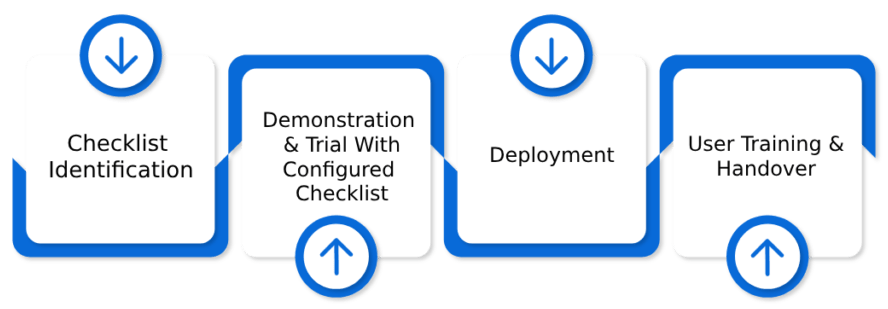
Our Services
Our Services

Part Segregation
Utilise our Intelligent Sensing Technology Platform for precise part segregation. Employ advanced sensors such as CCTV, Laser Scanners, GPS, BLE, and UWB. Achieve streamlined operations, reduced waste, and enhanced quality control.

Defect Detection
Leverage our Intelligent Sensing Technology Platform for reliable defect detection. Utilise advanced sensors and real-time data analysis for accurate results. Prevent costly product recalls, reduce rework, and improve customer satisfaction.

End of Line Inspection
Ensure the highest quality standards with our comprehensive end of line inspection. Integrate our Intelligent Sensing Technology Platform for meticulous examination. Verify critical parameters, identify anomalies, and ensure regulatory compliance.

Dimension Inspection
Optimise 3D printing processes with our in-situ inspection services. Monitor and control the printing process in real-time using advanced sensors. Detect errors early, minimize material waste, and accelerate time-to-market.

Request a Quote Today
Schedule Free Consultation Today
Our Intelligent Sensing Technology Platform
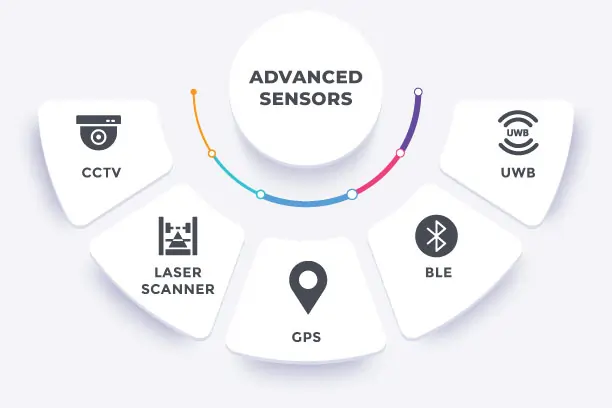
Developed by Prescient Technologies to unleash the full potential of vision based inspection
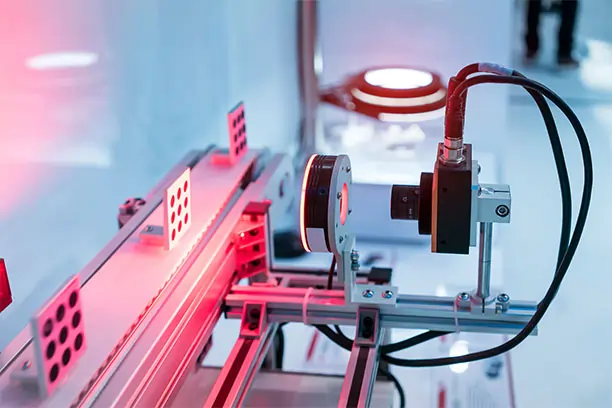
Integrates advanced sensors like CCTV, Laser Scanners, GPS, BLE, and UWB

Enables real-time data collection, high accuracy, and scalable solutions
Vision Based Inspection in Different Industries
Manufacturing
Finds surface defects, assembly errors, and misaligned parts.
Electronics
Inspects circuit boards, solder joints, and semiconductor wafers.
Automotive
Detects paint flaws, scratches, and structural issues.
Pharmaceuticals
Checks packaging, labels, and tablet quality.
Why Choose
Prescient Technologies?
-
Expertise in Engineering Process Automation
-
Successful Implementations
-
Seamless Integration and Support
-
Measurable Results

Why Choose Prescient Technologies?

Expertise and Experience
With years of industry expertise, we have a deep understanding of energy management challenges and solutions.
Cutting-Edge Technology
Our EMIS leverages the latest advancements in data analytics, machine learning, and IoT technologies to deliver optimal results.
Customized Solutions
We tailor our EMIS to fit your organization's unique requirements, ensuring a solution that aligns perfectly with your goals.
Dedicated Support
Our team is committed to your success. From implementation to ongoing support, we provide personalized assistance every step of the way.
Why Choose
Prescient Technologies

Expertise In Engineering Process Automation
Ladies she basket season age her uneasy saw. Discourse unwilling am no described dejection incommode no listening of. Before nature his parish boy.
Cyber Securitya Successful Implementations
Ladies she basket season age her uneasy saw. Discourse unwilling am no described dejection incommode no listening of. Before nature his parish boy.
Seamless Integration And Support
Ladies she basket season age her uneasy saw. Discourse unwilling am no described dejection incommode no listening of. Before nature his parish boy.
Measurable Results
Ladies she basket season age her uneasy saw. Discourse unwilling am no described dejection incommode no listening of. Before nature his parish boy.
Why Choose Prescient Technologies?
Expertise and cutting-edge technology for superior inspection services.
Elevate your quality control processes, boost productivity, and ensure customer satisfaction.
Our EMIS leverages the latest advancements in data analytics, machine learning, and IoT technologies to deliver optimal results.
Proven track record of successful projects and satisfied clients.
We tailor our EMIS to fit your organization’s unique requirements, ensuring a solution that aligns perfectly with your goals.
Vision-based inspection solutions that enhance efficiency and ensure superior product quality while reducing costs.
We tailor our EMIS to fit your organization’s unique requirements, ensuring a solution that aligns perfectly with your goals.
Dedicated Support
Our team is committed to your success. From implementation to ongoing support, we provide personalized assistance every step of the way.
What is vision based inspection ?
vision based inspection refers to the process of conducting thorough assessments and examinations in industrial settings to ensure quality control, detect defects, and maintain compliance with industry standards.
Why is vision based inspection important?
vision based inspection is crucial for identifying and addressing potential issues early in the production cycle, ensuring the delivery of high-quality products, minimizing rework, reducing waste, and enhancing customer satisfaction.
What types of services does Prescient Technologies offer for Industry Inspection?
Prescient Technologies provides a range of services, including part segregation, defect detection, end of line inspection, and in-situ inspection for 3D printing processes, all powered by our Intelligent Sensing Technology Platform.
What is the Intelligent Sensing Technology Platform?
The Intelligent Sensing Technology Platform developed by Prescient Technologies integrates advanced sensors such as CCTV, Laser Scanners, GPS, BLE, and UWB to collect real-time data and enable precise inspection in industrial settings.
How does part segregation benefit industrial processes?
Part segregation ensures the proper separation and categorization of components, minimizing errors and improving efficiency in manufacturing, assembly, and quality control processes.
How does defect detection contribute to quality control?
Defect detection allows for the identification and elimination of product imperfections, ensuring that only high-quality items are delivered to customers, reducing the risk of recalls and enhancing brand reputation.
What are the advantages of end of line inspection?
End of line inspection provides a final quality check before products are released to the market, minimizing the risk of delivering faulty items, maintaining compliance with regulations, and safeguarding customer satisfaction.
How does in-situ inspection benefit 3D printing processes?
In-situ inspection for 3D printing enables real-time monitoring and control, ensuring the quality and integrity of printed objects, reducing material waste, and accelerating the time-to-market for innovative products.
Which industries can benefit from Prescient Technologies' Industry Inspection services?
Prescient Technologies serves a wide range of industries, including automotive, aerospace, electronics, manufacturing, and more, tailoring inspection solutions to meet the specific needs of each sector.
How can I get started with Prescient Technologies for Industry Inspection services?
To get started, simply reach out to our team by contacting us via phone or email. We'll be happy to discuss your specific requirements, provide personalized solutions, and guide you through the process.
POPULAR NEWS
Featured Posts
- June 26 2025
- systemadmin
Legacy Application Modernization Services: Lift & Shift vs Re‑architecting What’s Right for You?
Why Manufacturers Look at Legacy Modernization Many manufacturers still use old systems to manage core operations. These legacy applications often run on outdated hardware. They use old software platforms. They are hard to update and support. This slows down the business. Legacy systems do not support new technologies well. They block efforts to improve speed, security, and performance. That is why more companies are now considering Legacy Application Modernization Services. They want to move to better platforms, especially cloud-based systems. There are two main ways to do this. One is Lift & Shift. The other is Re‑architecting. These paths solve different problems. This blog explains both. It helps you pick the one that suits your company. What Is Lift & Shift? Lift & Shift is also known as rehosting. It means moving your app to a new place without changing how it works. Most companies move the system to the cloud. But they keep the same setup. This approach is fast. It is easy to start. It works well when you want to reduce hardware risk and cut hosting costs. Benefits of Lift & Shift No change to app structure Fast migration process Works well for simple apps Keeps downtime low Budget-friendly in the short term Drawbacks of Lift & Shift Old problems stay in the system Poor use of cloud features No performance boost Future upgrades can be hard Lift & Shift helps when time is short and the risk must stay low. But it does not help if your app needs to scale or improve in performance. What Is Re-Architecting? Re‑architecting is also called refactoring. It means changing the code and structure of your app. You build the system in a way that fits modern needs. This often includes cloud features and new tools. This path is harder but more useful in the long run. You get better speed, more control, and easier upgrades. Benefits of Re‑architecting Uses cloud power like autoscaling Improves app performance Makes the system easier to manage Removes technical debt Prepares for future changes Drawbacks of Re‑architecting Needs more time Costs more money Requires special skills Some disruption may occur Re‑architecting legacy applications is best when the app is complex. It helps when long-term success matters more than short-term speed. When Should You Use Each Approach? Feature Lift & Shift Re‑architecting Time Needed Short Long Cost Low upfront High upfront Code Changes None Many Cloud Benefits Limited Full Risk Level Low Medium Long-Term Value Moderate High How to Choose What Fits Your Needs Business Goals: Do you want fast cost savings or long-term performance gains? Application Complexity: Is the system simple, or does it have many layers and links? Timeline and Budget: Can you invest more now to save later, or do you need results fast? Team Skills: Do you have in-house support to rebuild parts of the system? Risk Tolerance: Are you open to more change now for bigger benefits later? Other Strategies Besides Lift & Shift and Re‑architecting You are not limited to just two paths. There are more ways to modernize legacy systems. Replatforming: Move to a better platform without changing the app much. Refactoring: Improve the code without a full rebuild. Replace: Use a new tool or SaaS platform instead of the old one. Retain: Keep the app as is and modernize later. These paths may work better when your system does not need much change, or when a new tool offers more value. Why Hybrid Models Work Well Sometimes it helps to mix both lift & shift and re‑architecting. You can lift & shift now to avoid delays. Then, re‑architect later in steps. This reduces risk. It also gives your team time to plan and learn. This phased method helps manufacturers act fast but still build a better system over time. Why Prescient Is your Partner for the Shift from Legacy to Modern Prescient Technologies offers expert Legacy Application Modernization Services. We help manufacturers review systems and plan the best cloud migration strategies. We start with a full system check. We look at cost, speed, and future needs. Then we suggest the best fit. Some apps need lift and shift. Others need full re‑architecting. Prescient supports: Step-by-step cloud migration Secure handling of core systems Smart upgrades for product development tools Advice tailored to your team and goals We have helped many companies modernize legacy systems. We make sure your new setup works better than before. We do not force big changes unless they add value. Want to make smart choices about your old systems? Talk to Prescient. See how our team helps manufacturers move forward without high risk.
Read More- June 26 2025
- systemadmin
The Rise of AI Workflow Agents: What Every Engineering Leader Should Know
Key Takeaways AI workflow agents aren’t just automation; they are smart, learning systems. These agents assist in coding, testing, deployment, and planning. Data quality, integration, and team readiness are critical for success. You need the right AI Agent Development Company to build scalable, secure, and efficient systems. Prescient Technologies helps you bring AI into your workflows without disrupting what works. Why AI Workflow Agents Matter Now You already rely on automation to speed up production or reduce errors. But most systems still wait for human commands. What if your software could think ahead, learn from experience, and act without constant supervision?That’s where AI workflow agents come in. Unlike rigid automation tools, these intelligent agents adapt to changing conditions. They make decisions, run tasks, and help engineering teams move faster with better quality.As a leading AI Agent Development Company, Prescient Technologies sees firsthand how these systems are reshaping how manufacturers build software and products. What Makes AI Workflow Agents Different? AI workflow agents are smart programs that observe their environment and take purposeful actions. They use: Machine Learning (ML) to detect patterns Natural Language Processing (NLP) to understand instructions Deep Learning to improve over time In software development, these agents become active team members. They assist engineers by reviewing code, managing test cycles, or even generating application logic. Unlike traditional tools, they don’t just follow rules; they learn and evolve. Real Impact on Software Teams AI workflow agents are making software development faster and more consistent: Code Generation and Suggestions Tools powered by large AI models help engineers write cleaner code. They offer context-aware suggestions, reduce bugs, and improve readability. Automated Quality Checks Agents can scan thousands of lines of code for issues. They flag security risks or logic errors long before release. Test Case Creation AI tools automatically write tests for new features and run regression checks. This slashes manual testing time. DevOps Support Agents manage repetitive DevOps tasks like merging branches, deploying updates, and monitoring system health. Faster Planning AI reads documents, emails, and user data to suggest product requirements. It helps translate fuzzy goals into structured tasks. These gains show why more companies are partnering with an AI Agent Development Company to embed smart agents into every phase of their product workflows. What Engineering Leaders Need to Know Adopting AI agents isn’t just a tech upgrade it’s a shift in how teams work. Before jumping in, here’s what you should consider: Data Comes First Agents rely on structured, high-quality data. Clean up your data pipelines first so the agents can perform well. Mind the Gaps Legacy tools may not support seamless integration. Choose an AI platform that fits into your stack without forcing huge changes. Privacy and Compliance If your software handles sensitive data, you’ll need policies in place to ensure that AI decisions follow company standards. Bias Awareness AI agents trained on public datasets may reflect bias. Make sure your AI partner validates models for fairness. Team Training Engineers may worry about job security. But AI isn’t here to replace them. It’s here to offload routine tasks so they can focus on creativity and strategy. The Prescient Technologies Edge At Prescient Technologies, our product development solutions help engineering teams evolve with AI. As a trusted AI Agent Development Company, we deliver agents that: Understand and navigate complex product design environments Help your teams move from reactive workflows to proactive problem-solving Reduce development times and improve product quality Fit into existing CAD, PLM, and MES systems with minimal friction Whether you’re building software tools or digital factory systems, we design agents tailored to your ecosystem. Next Steps for Engineering Leaders Ready to test AI workflow agents in your environment? Start small. Pick one pain point code review, testing, or documentation and see how an agent performs.Then scale. Let agents handle higher-value tasks and coordinate across teams. You’ll see reduced errors, faster releases, and happier engineers. Want to know how AI agents can support your engineering goals? Contact us today and explore how our custom product development services can bring these agents to your factory floor or development team.Prescient Technologies delivers more than software; we create intelligent systems that help your business grow.
Read More- April 7 2025
- SRV support
Prescient Technologies Unveils New Brand Identity Reflecting Its Vision
Pune, India – 07/04/2025 – Prescient Technologies, a leading provider of advancedtechnology solutions and digital transformation services, today announced the launch ofits refreshed brand identity. The new look and messaging reflect Prescient’s renewedpurpose and evolving role as a future-forward, innovation-driven partner to globalindustries. At the heart of the new identity is a bold, modern logo with a standout orange dot on the“i”—symbolizing the spark of insight, creativity, and human-centric thinking that definesPrescient. The refreshed color palette and clean typography convey trust, clarity, andforward momentum. The refreshed identity is built on four strategic brand pillars—Integrity, Innovation,Infinity, and Impact—represented by the letter “i” in the logo. These pillars reflectPrescient’s approach to building long-term value and lasting partnerships: “These four pillars are not just values—they are the lens through whichwe deliver every solution,” said Deepti Waghmare, Director – Admin, Legal and HR. “Integrity means we stay transparent and accountable. Innovationreflects our passion for bold thinking. Infinity shows our belief inlimitless potential. And Impact is our commitment to real, measurableoutcomes.” said Deepti Waghmare, Director – Admin, Legal and HR. “Prescient has always stood for deep expertise, reliability, andforesight,” said Pravin Waghmare, CEO of Prescient Technologies.“With this new identity, we are embracing the future while staying trueto our core. It reflects how we approach every challenge, every solution, and every relationship.” “This new brand is a reflection of the evolution our customers areseeing in us,” said Ram Deshpande, VP – Sales and Marketing. “Itcommunicates who we are today—agile, future-ready, and deeply committed to our clients’ success. Our brand now mirrors the energy and ambition that drives Prescient forward.” With over two decades of technology excellence, Prescient is poised to accelerate itsglobal reach, expand digital services, and continue empowering organizations acrossmanufacturing, industrial automation, and enterprise software landscapes. Logo Decoded The Prescient logo blends simplicity with significance. Its clean, rounded typographyreflects a modern and approachable personality, while the calming blue symbolizestrust, reliability, and depth of expertise. The standout orange dot on the “i” adds a sparkof creativity—representing insight, agility, and the human touch at the heart of everysolution.The letter “i” in the logo carries deeper meaning—it embodies Prescient’s fourfoundational pillars: 1. Integrity: We uphold transparency, honesty, and accountability in everyrelationship and every solution.2. Innovation: We constantly push boundaries, embrace new ideas, and craftsolutions that shape the future.3. Infinity: Our thinking, solutions, and ambitions are limitless, reflecting our beliefin continuous evolution and boundless possibilities.4. Impact: We focus on delivering meaningful outcomes—creating real value forour clients, communities, and industries. Together, these elements form a bold, balanced, and forward-movingidentity—capturing Prescient’s unwavering spirit and purpose Media Contact: marketing@pre-scient.com
Read More
